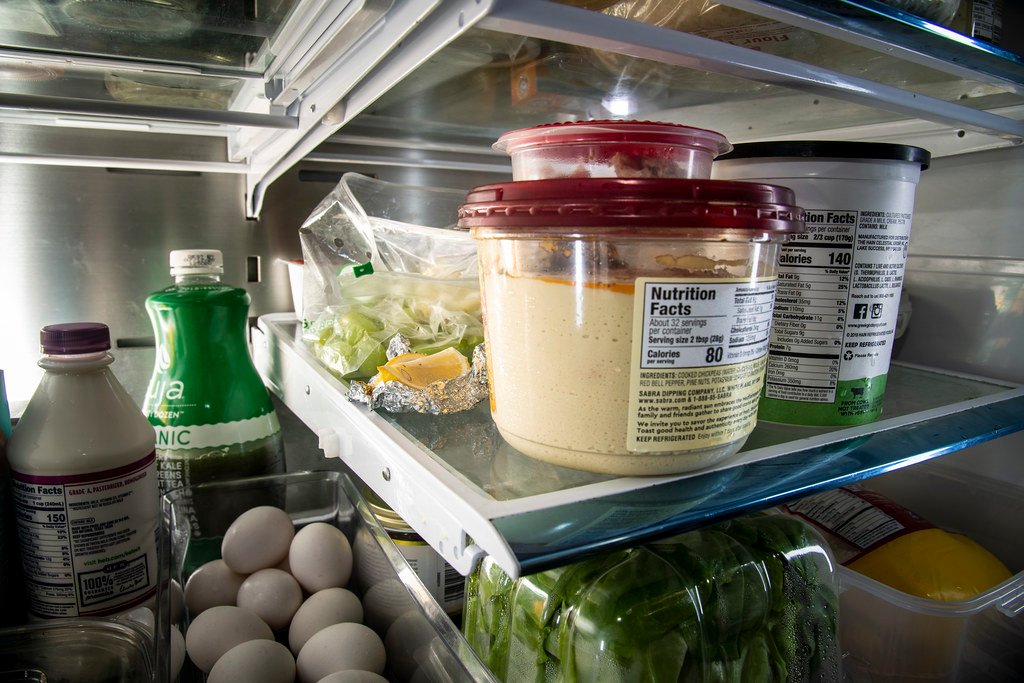Now Reading: The Importance of Food Storage in Urban Areas
-
01
The Importance of Food Storage in Urban Areas

The Importance of Food Storage in Urban Areas
With each passing day, our bustling cities are expanding and becoming more populated. As urban dwellers fill the concrete jungle, it brings about a crucial concern – the availability and sustainability of food. In these densely populated areas, the need for efficient and effective food storage systems has never been more important. In fact, the significance of food storage in urban areas goes far beyond mere convenience; it plays a vital role in our overall well-being and the future of our cities. From ensuring food security to minimizing waste, let us delve into the various aspects that highlight the undeniable importance of food storage in the urban realm. As we navigate the complexities of urban living, it’s time to uncover the hidden world that safeguards our sustenance in these concrete jungles.
Table of Contents
- The Importance of Adequate Food Storage in Urban Areas
- Urban Areas and the Challenge of Food Storage
- Understanding the Impact: Risks and Consequences of Inadequate Urban Food Storage
- The Solution Lies Within: Strategies for Effective Food Storage in Urban Environments
- Building Resilience: Implementing Practical Measures for Secure Urban Food Storage
- Q&A
- In Conclusion

The Importance of Adequate Food Storage in Urban Areas
Sustainable and adequate food storage is an often-overlooked necessity in urban areas, yet its importance cannot be stressed enough. As cities continue to grow and expand, the ability to ensure a stable food supply becomes increasingly vital. Without proper storage systems in place, urban dwellers face numerous challenges, ranging from food shortages during emergencies to rising prices and limited access to nutritious options.
1. Resilience during emergencies:
One of the primary reasons for investing in adequate food storage in urban areas is to establish resilience during emergencies. Whether it be natural disasters, pandemics, or disruptions in the supply chain, having a sufficient stockpile of food can give individuals and communities a sense of security. This helps mitigate the potential impact of unforeseen events and enables a smoother transition through challenging times.
2. Food security and self-sufficiency:
In bustling urban environments, access to fresh, affordable, and nutritious food can often be limited. By implementing effective food storage solutions, cities can work towards enhancing food security and self-sufficiency for their residents. With proper storage techniques in place, it becomes possible to preserve surplus harvests, support local agriculture, and reduce reliance on outside sources during times of scarcity.
3. Minimizing food waste and promoting sustainability:
Adequate food storage also plays a crucial role in minimizing food waste and promoting sustainability. In urban areas where space is limited, effective storage systems can help prolong the shelf life of perishable items, reducing the likelihood of spoilage and unnecessary disposal. By managing food inventories efficiently, cities can contribute to global efforts to combat food waste and its associated environmental impacts.
To ensure a sustainable and prosperous future for urban areas, prioritizing the establishment of adequate food storage systems is of utmost importance. By embracing innovative approaches and investing in infrastructure, cities can meet the nutritional needs of their residents, enhance resilience, and foster a more sustainable food ecosystem.

Urban Areas and the Challenge of Food Storage
Urban areas are constantly faced with the challenge of food storage due to their limited space and the high demand for fresh produce. With limited options for storing food locally, urban dwellers often have to rely on importing goods from rural areas. However, this process can be time-consuming and costly.
To tackle this issue, urban planners are exploring innovative solutions such as vertical farming and hydroponics. These methods allow for the cultivation of crops in controlled environments, using minimal space and resources. By utilizing advanced agricultural techniques, urban areas can reduce their reliance on external food sources and ensure a steady supply of fresh produce year-round.
Additionally, urban communities can promote sustainable practices like composting and community gardens. Encouraging residents to compost food waste not only reduces landfill waste but also creates nutrient-rich soil for urban gardens. Community gardens provide a valuable space for locals to grow their own food, fostering a sense of self-sufficiency and enhancing green spaces in urban neighborhoods.
The challenge of food storage in urban areas calls for creative solutions that prioritize sustainability and optimize limited resources. Through the integration of innovative farming techniques and community-driven initiatives, urban environments can overcome the hurdles associated with limited space and ensure a more resilient food supply chain.
Understanding the Impact: Risks and Consequences of Inadequate Urban Food Storage
Urban food storage plays a crucial role in ensuring a sustainable and resilient food system for our cities. However, inadequate food storage practices can lead to a myriad of risks and consequences that affect both individuals and the community as a whole. Let’s delve into some of these impacts.
- Food Waste: Inadequate storage facilities often result in spoilage, leading to wasted food resources. This not only perpetuates the global issue of food waste but also puts additional strain on the environment, as valuable resources like water and land go to waste.
- Food Insecurity: The consequences of inadequate urban food storage can result in food shortages, leading to increased food insecurity among vulnerable populations. Limited access to fresh and nutritious food can have detrimental effects on public health, exacerbating issues such as malnutrition and chronic diseases.
- Economic Burden: Insufficient food storage can also have negative economic implications. When perishable food items are wasted due to improper storage, it not only impacts individual households’ budgets but also affects the overall economy. Additionally, the costs associated with food production, transportation, and storage increase, further straining the resources within the food system.
By understanding the risks and consequences associated with inadequate urban food storage, it is clear that addressing these issues is essential for a sustainable and prosperous future. Implementing proper storage facilities, promoting education on effective storage practices, and encouraging community initiatives are crucial steps towards ensuring food security, minimizing waste, and fostering a resilient food system for our urban centers.
The Solution Lies Within: Strategies for Effective Food Storage in Urban Environments
In today’s rapidly growing urban environments, finding effective strategies for food storage can be a challenge. However, the solution lies within our own innovative ideas and resourcefulness. With the right approach, we can make the most out of limited space and ensure a sustainable food supply for urban dwellers.
One of the key strategies for effective food storage in urban environments is maximizing vertical space. Utilizing vertical shelving units or hanging baskets allows for efficient use of limited floor space. By stacking cans, jars, and dry goods neatly, we can maximize storage capacity while keeping everything easily accessible.
- Consider investing in space-saving storage solutions such as collapsible containers or vacuum-sealed bags. These can help reduce the footprint of items like bulky grains, pasta, or dried fruits.
- Make use of underutilized spaces like the back of doors or inside cabinet doors by attaching hooks or small shelves. These areas can be great for storing smaller items like spices, condiments, or small kitchen utensils.
- Organize your storage by categorizing food items and using labeled bins or containers. This makes it easier to find what you need and prevents food from getting lost or forgotten in the depths of your pantry.
While urban environments may present unique challenges for food storage, by implementing these strategies, we can ensure a well-organized and efficient system that meets our needs and contributes to a sustainable future.
Building Resilience: Implementing Practical Measures for Secure Urban Food Storage
In a world where urban populations are growing rapidly, ensuring the security and resilience of our food storage systems has become paramount. With the increasing frequency of natural disasters and other unforeseen events, it is crucial to implement practical measures that can safeguard our urban food supplies.
One practical measure is the establishment of community food hubs, where locally sourced produce can be stored and distributed. These hubs can serve as centralized points for urban farmers, local food producers, and consumers to come together and create a sustainable food system. By promoting the use of these hubs, cities can reduce their dependence on external food sources and enhance their resilience in times of crisis.
Additionally, modern technologies such as smart storage systems and IoT (Internet of Things) sensors can play a significant role in enhancing food storage security. These technologies allow for real-time monitoring of temperature, humidity, and other environmental factors. By implementing these systems, urban food storage facilities can detect and address potential issues before they compromise the quality and safety of stored food items.
- Establishment of community food hubs to promote local sourcing and reduce dependence on external food sources.
- Utilization of smart storage systems and IoT sensors for real-time monitoring of environmental factors.
- Implementing stringent security protocols such as access control and surveillance systems to prevent unauthorized access to food storage facilities.
- Investing in climate-controlled storage facilities to prolong the shelf life and quality of perishable food items.
- Collaborating with local farmers and food producers to develop sustainable and resilient urban food storage strategies.
By implementing these practical measures, cities can build resilience in their food storage systems and ensure a steady supply of food for their urban populations. The combined efforts of communities, technology, and strategic partnerships will play a vital role in creating a secure and sustainable future for urban food storage.
Q&A
Why is food storage important in urban areas?
Food storage is crucial in urban areas to ensure a steady supply of nutritious food during emergencies, natural disasters, or disruptions in the food supply chain. It also promotes self-sufficiency and helps individuals and communities tackle food insecurity.
Can you provide some examples of food storage methods suitable for urban areas?
Urban areas can utilize various food storage methods, such as pantry storage, root cellars, vertical gardening, and community gardens. These methods maximize space and resources, enabling urban dwellers to save and preserve food to sustain themselves in difficult times.
How does food storage contribute to food waste reduction?
Efficient food storage helps in reducing food waste by preserving perishable items for longer periods. This prevents spoilage and allows people to use food items before they go bad. Proper food storage practices also encourage mindful eating, reducing the quantity of discarded food.
What are the advantages of community gardens in urban food storage?
Community gardens in urban areas not only provide fresh, locally grown produce but also act as spaces for communal food storage. They promote sharing and collective responsibility, allowing surplus harvests to be stored and distributed among community members, reducing food waste.
How can urban dwellers start their food storage journey?
Urban dwellers can begin their food storage journey by assessing their needs, creating a stockpile of non-perishable food items, and implementing proper storage practices. Investing in quality storage containers, rotating food stocks regularly, and staying updated on best food storage practices are essential steps.
Why is it essential to store non-perishable items for emergencies?
Non-perishable food items have a long shelf life and can provide sustenance during emergencies when access to fresh food is limited or disrupted. These items include canned or dried foods, grains, legumes, and powdered milk, providing an important source of nutrition during challenging times.
How does efficient food storage impact sustainability in urban areas?
Efficient food storage reduces the demand for excessive packaging, as individuals can buy items in bulk, reducing plastic and paper waste. Furthermore, preserving food longer mitigates the need to transport and produce new goods, which minimizes the environmental impact associated with food production and transportation.
In Conclusion
As the sun sets on this exploration of the importance of food storage in urban areas, we find ourselves marveling at the resilience and ingenuity of those who dare to shape our cities. In an era where concrete reigns supreme and towering structures frame our skyline, the notion of food storage may seem trivial amidst the rush of urban living. Yet, upon deeper reflection, we come to realize that the foundations of any thriving metropolis lie not only in its iconic landmarks, but also in the availability and accessibility of sustenance for its inhabitants.
Food storage, as we have unraveled, is not a mere concept relegated to rural farms or distant plots of land. It is a pressing matter that reverberates within the very heart of our urban jungles. We have witnessed how a well-organized and efficient food storage system can bridge the divide between abundance and scarcity, safeguarding against emergencies and providing a sense of security to countless city dwellers.
Let us ponder the multifaceted benefits that food storage brings to our urban lives. It is an essential thread woven into the tapestry of urban resilience, for it allows us to anticipate and prepare for unforeseen circumstances such as natural disasters or global crises. Beyond its pragmatic merits, food storage is a lifeline of equitable access, ensuring that every individual, regardless of social or economic standing, can find solace in the sustenance that nourishes their bodies and minds.
As we bid farewell to these pages, we invite you to reflect on the pivotal role food storage plays in our city’s prosperity. From community-led initiatives preserving heirloom seeds, to innovative urban gardens tucked into the forgotten corners of our streets, there is a symphony of hope and possibility that can bloom from this endeavor. By embracing the notion of food storage, we unlock an unwavering commitment to our fragile planet, and an unwavering testament to the resilience of human potential.
So, fellow urban dwellers, let us not overlook the significance that lies beneath the surface of our bustling cityscapes. Let us acknowledge and embrace the importance of food storage, for it is the secret ingredient that alchemizes any city into a nourishing sanctuary. As we navigate the labyrinth of urban living, let us raise our voices to demand an equilibrium between progress and preservation, where ample and accessible food storage becomes an undeniable tenet of our urban landscape. Together, let us cultivate a future where no empty stomach is left unheard and no city is left wanting.
As an affiliate, my content may feature links to products I personally use and recommend. By taking action, like subscribing or making a purchase, you’ll be supporting my work and fueling my taco cravings at the same time. Win-win, right?
Want to read more? Check out our Affiliate Disclosure page.





